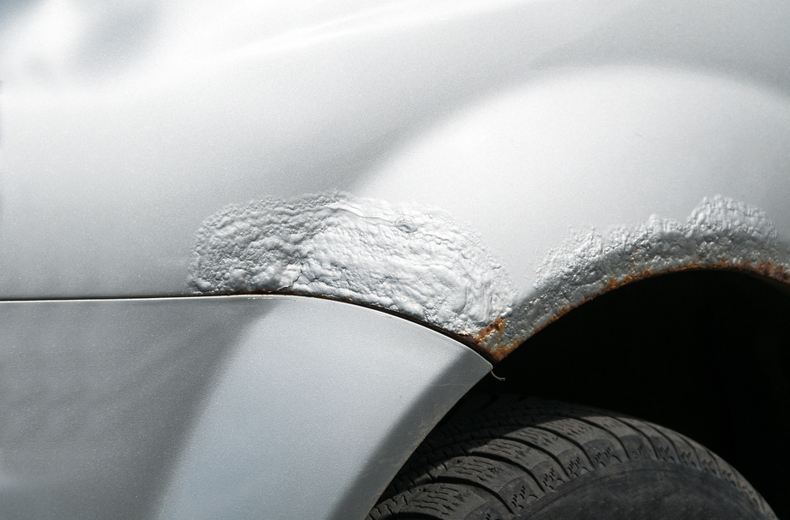How to Prevent Rust on Your Vehicle in Coastal Areas
Have you ever noticed how quickly metal rusts near the coast? It’s almost as if the salty breeze carries an invisible enemy for your vehicle. For those living in coastal areas, rust is more than an aesthetic problem; it’s a silent killer that compromises your car’s structural integrity and resale value.
Coastal environments are notoriously harsh on vehicles, with salt, humidity, and moisture accelerating the rusting process. The good news? With the right knowledge and proactive care, you can protect your vehicle and keep it looking and functioning its best.
In this blog, Drive UAE will talk about common causes of rust in coastal areas and provide some tips to cater to them. Let’s get started.
Understanding Rust: What Causes It?
Rust is a natural process that happens when metal reacts with oxygen and moisture over time.
Here are the key factors that contribute to rust formation:
- Iron in Metal: Rust only forms on iron or steel, as it’s a reaction between iron, oxygen, and water.
- Moisture: Water, even in small amounts, sets off the rusting process by interacting with metal.
- Salt in the Air: Coastal air carries salt, which increases moisture retention on surfaces and accelerates rust.
- Temperature Fluctuations: Sudden changes in temperature create condensation, which provides the moisture needed for rust to form.
- Scratches or Chips: Exposed metal from scratches or paint chips is more vulnerable to rust.
- Neglecting Maintenance: Failing to clean or protect your vehicle allows dirt, salt, and water to build up, worsening the problem.
Signs of Rust: How to Spot It Early?
Rust is easier to deal with when caught early. Spotting the warning signs before rust spreads can save your vehicle from extensive damage and costly repairs.
By knowing where to look and what to watch for, you can take action promptly to protect your car.
1. Discoloration or Bubbling Paint
Look for patches of discoloration, often reddish-brown, under your car’s paint. Bubbling or blistering paint indicates that rust is forming underneath the surface.

2. Surface Rust on Metal Parts
Check exposed metal areas like the undercarriage, wheel wells, and door edges. These spots are often the first to show rust due to direct exposure to the elements.

3. Flaking or Crumbling Metal
Run your hand over metal surfaces to feel for rough, flaky areas. Advanced rust can cause metal to weaken and crumble, which can be dangerous for structural components.

4. Corroded Bolts and Screws
Inspect bolts, screws, and hinges, especially in the engine bay or under the hood. Corrosion on these parts can make them difficult to remove or use.

5. Water Stains or Moisture Buildup
Check inside your car, especially under mats or in the trunk, for water stains or dampness. Hidden moisture can lead to rust in areas you might not immediately notice.

6. Strange Noises When Driving
Rust can affect structural parts like the suspension or exhaust system. Listen for unusual creaking or rattling sounds, which could signal rust damage.

Preventing Rust on Your Vehicle
Rust prevention is key to protecting your car, especially in coastal areas where salty air accelerates corrosion. By adopting a proactive approach and regular maintenance, you can extend your vehicle’s lifespan and keep it looking its best.
Here’s how:
1. Wash Your Vehicle Regularly
- Rinse off salt, dirt, and grime, especially after beach trips or driving on salty roads.
- Pay special attention to the undercarriage, where rust often starts.

2. Apply Wax for Extra Protection
- Use a high-quality car wax to create a barrier between your vehicle’s paint and moisture.
- Waxing your car every few months helps repel water and prevents rust from forming.

3. Invest in Rust-Proofing Treatments
- Apply rust-proofing sprays or coatings to vulnerable areas like the undercarriage and wheel wells.
- Consider professional rust-proofing for comprehensive protection.

4. Keep Your Car Dry
- Dry your car thoroughly after washing or exposure to rain.
- Ensure drainage holes are clear to prevent water buildup inside doors or panels.

5. Inspect and Touch Up Paint
- Check for scratches, chips, or cracks in your car’s paint that expose bare metal.
- Use touch-up paint to seal exposed areas and prevent rust from forming.

6. Park in a Covered Area
- Use a garage or carport to protect your vehicle from salty air and rain.
- If parking outdoors, invest in a car cover designed for coastal climates.

7. Avoid Driving on Salty Roads
- Limit driving on roads treated with salt during winter or near coastal areas.
- Rinse your car immediately after such trips to remove salt residue.

8. Schedule Regular Inspections
- Have a professional inspect your car periodically for signs of rust in hidden areas.
- Early detection and minor repairs can save you from costly damage later.

Conclusion
Rust can be a relentless enemy for vehicles in coastal areas, but with early detection and proactive care, you can keep it at bay. Regular maintenance, protective measures, and prompt repairs are key to preserving your car’s appearance and safety. By following the tips shared in this guide, you’ll ensure your vehicle stays rust-free and road-ready for years to come.
FAQs
- How often should I wash my car in a coastal area?
Wash your car at least once a week, focusing on the undercarriage, to remove salt and moisture buildup. - Are certain vehicles more rust-resistant than others?
Yes, vehicles with galvanized steel or factory-applied rust-proof coatings are more resistant to rust. - Is rust-proofing worth the investment?
Absolutely, especially in coastal areas, as it provides long-term protection against rust and corrosion. - What’s the difference between surface rust and structural rust?
Surface rust affects the exterior and is mostly cosmetic, while structural rust weakens the vehicle’s frame and safety.

